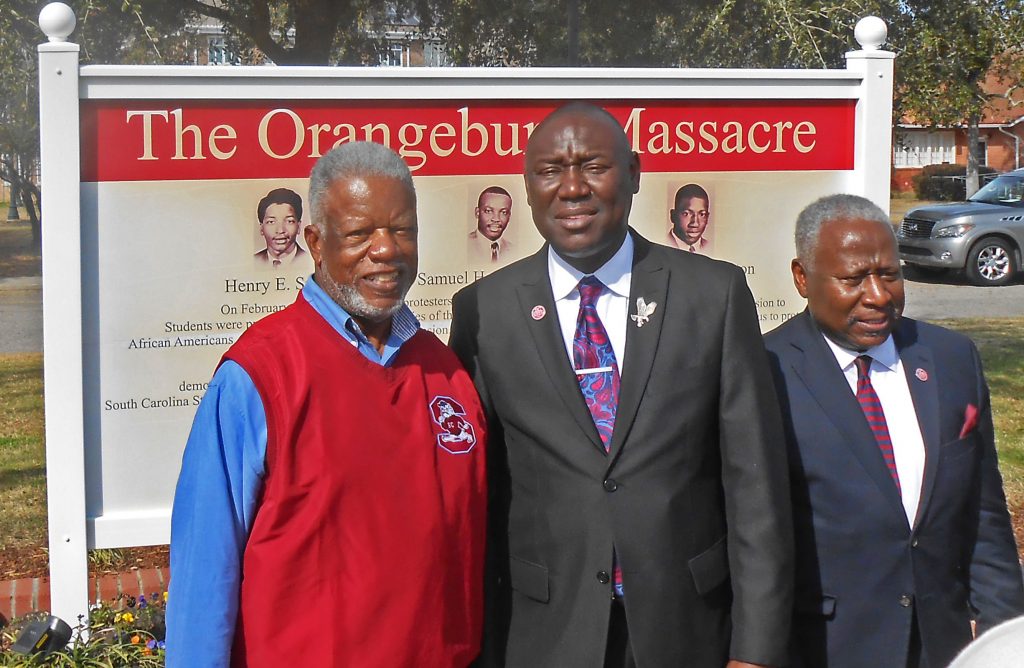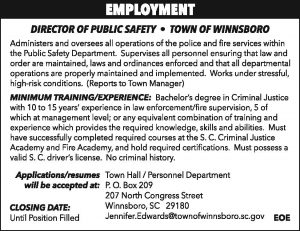
WINNSBORO – For the last 56 years, on Feb. 8, Winnsboro’s Arthur Lathan has traveled to Orangeburg to attend the annual memorial for the Orangeburg Massacre, the 1968 shooting of black student protesters by law enforcement on the S. C. State College campus.
On the drive down, every year, Lathan says he can’t help but visualize scenes leading up to that tragic event and the massacre itself, as a large group of college students prepared to march toward a nearby bowling alley to protest the ‘Whites Only’ sign posted on the front door. He said his mind goes back to the police with clubs and guns, the National Guardsmen, the fire in the street, and then, as night fell on Feb. 8, 1968, the police opened fire on the students. Chaos erupted as the unarmed students scrambled up an embankment on the edge of the S.C. State campus, screaming, stumbling, falling, bleeding, and dying.
Lathan wasn’t visualizing what he’d seen on television. He was remembering what he had lived through that February night during his junior year at S.C. State. He was one of the students who, unarmed and scared, stood against bigotry and racial injustice in the face of clubs, brutality and gunfire. He was one of those students scrambling up the embankment.
It was the first time in America that police had fired at students on a college campus. It was a new era.
“In the 60s there started to be a lot of activism going on throughout our country, protests by black students, especially, against segregation. I was in college at the time and part of that generation that wanted and fought for change,” Lathan said.
“The All Star Bowling Lanes was significant, because it was near campus and a place we, as students, would have liked to go and have fun,” Lathan said. “Some places we would go would just ask us to leave because we were black, but the bowling alley had a ‘Whites Only’ sign on the front door which was openly offensive to us.
“It wasn’t about bowling,” he said. “It was about opportunity, about the need to be considered equal.”
A group of students that Lathan was friends with at S. C. State had begun to be moderately successful with protests beginning a year earlier when they boycotted classes to bring needed change and opportunity to their college.
“I wasn’t on the front lines of the student protests, but I was in there and I was friends with some of the leaders of the movement so I knew what was going on,” Lathan said.
“It was early in my junior year that we began to make plans to march on the bowling alley,” he said. “We met for weeks, planning and strategizing, sometimes twice a day. But in all of our meetings, it was always stressed that we were to be nonviolent and orderly.
“It was on the first Sunday evening in February that we all walked down to the bowling alley together to see if we could get in. After being refused, we left. But we regrouped and discussed how to go forward.
“When we went back on Monday and Tuesday evenings, the owner locked the door and called the police who told us to go back to the campus, all the while allowing white people to enter the bowling alley,” Lathan said.
From Sunday through Wednesday, the students returned to the bowling alley every evening, according to news reports. Each day, the police presence and the number of student protestors increased. There were reports of police beating the students with clubs and spraying them with fire hoses.
“Tensions grew and out of frustration after being turned away from the bowling alley by police on Wednesday evening,” Lathan said, “some of the students picked up some loose bricks on the sidewalk near a car dealership and chunked them at the cars on the lot.”
News reports say the damage to the cars was about $5,000, but the students’ actions brought a new level of scrutiny from the police.
Tensions High
“That next day, Thursday, tensions were at an all-time high on both sides,” Lathan recalls. “By the time we left our dorms to walk over to the bowling alley about 5 o’clock or so, the governor had called in hundreds of National Gaurdsmen, the highway patrol, as well as city police. They were lined up on the street in front of the campus and we could see they weren’t going to let us leave campus.
“We were standing on a little rise, an embankment near the edge of the campus close to the street. Someone built a fire down on the street near the officers. A crowd of bystanders was gathering,” he recounted.
“As the police were dealing with the fire, the students – not armed – were growing boisterous and throwing sticks and other objects at the police.
“I was in the crowd of students, about in the middle of the group when we heard what sounded like a gun shot from somewhere. Then, the police commander gave the order to fire on us,” Lathan recalled.
“We were in chaos, running, not knowing what was happening. I fell and was being trampled. I got up. Everyone was screaming. Many were shot and on the ground bleeding. My brother Thomas, a sophomore, was my roommate in the dorm, but I didn’t know where he was.
“My first thought was to run back to my dorm to see if he was there. He wasn’t. I panicked. I ran to the infirmary to see if he had been injured. There was blood everywhere, on the sidewalk and inside on the floors, students were screaming and crying. About 14 or 15 wounded students were brought in while I was there. Parents were looking for their kids.
“The most seriously wounded, including my brother’s friend Henry Smith, were taken to the regional hospital in Orangeburg, but it was segregated at the time,” Lathan recalled, “and I understand the wounded black students were not seen immediately and were not treated humanely. Henry died, as did two others. Twenty-six students were wounded.
“I traced my path back to the embankment trying to find Thomas, but the police were still there so I went back to the dorm to call my parents on one of the two payphones on my floor. There were so many phone calls being made that the phone system went down and I couldn’t call out until the morning.
“My parents lived in rural Lancaster County at the time, and didn’t get the news about the shooting until my mother got my call Friday morning. Because my dad was already at work with no communication, he didn’t learn about it until he got off work on Friday. He put his shotgun in the back seat and came to get me and my brother that evening.
“Campus was locked down for a week. When we returned to campus, we continued to protest and pressed the governor for punishment for the officers who killed the students. Some things were slowly beginning to change. Eventually, the bowling alley was shut down for good. It’s dilapidated now, but consideration is being given to restoring it for use as a museum dedicated to the massacre. Eventually, some police officers were brought to trial, but they were acquitted,” Lathan said.
“It was unfortunate that three people had to give their life that night for expressing their resentment to such an injustice in our society,” Lathan lamented.
“The atrocity of that night of Feb. 8 on our campus will forever be etched in my mind,” he said. “As a survivor, I am sad, and I honor the sacrifice of those who lost their lives, but I take solace in seeing the result of their sacrifice and our efforts.
“I have lived to see many of the things that they died for come to fruition. For that I am grateful. While the events of that day and time are a tragic part of my life, I have moved on. I have not forgotten, however, and I never will. But I refuse to let negativity and setbacks control my life.
“I maintain my faith and believe that we are all brothers and sisters and should live and act as such,” Lathan said.
Arthur Lathan is a 1969 graduate of S. C. State College (now University), and is retired from the U. S. Army. He is also retired as the residence maintenance engineer of SCDOT, and served as bailiff at the Fairfield Courthouse for 10 years. He is currently president of the Winnsboro Rotary Club. He and his wife Carrie have two adult sons and live in Winnsboro. Lathan volunteers and continues to participate in many Fairfield County community activities.











